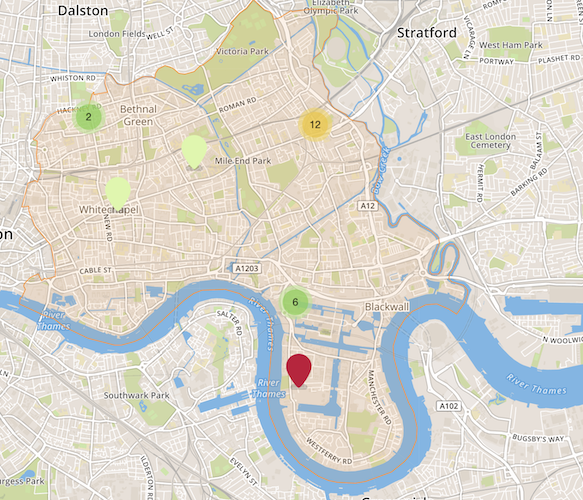The East End of London has a deep and vibrant history much of which stems in some way from the vast Docklands which used to sit at the heart of the capital’s trading empire. Today, across the country people are rightly reflecting on what that history means and how we should accurately recognise and mark it in modern our society.
That’s why we’ve launched our “representing race and equality in public spaces consultation“, asking residents of Tower Hamlets – the London borough at the heart of the East End – to tell us if there are monuments, plaques, buildings, roads or other representations of history that they feel are at odds with the values that we all want to live by. The contributions we receive will form the basis of a conversation and ultimately a decision-making process that will have the community at its heart
Our council became the first in the country to pro-actively remove a statue which served as a prominent tribute to Robert Milligan, a historic slave trader from the 1800s. Many local people, the us included, will have had at best the haziest idea who Milligan was, and were appalled to learn of his leading role in the slave trade.
While it was not the council’s statue, we, in collaboration with the Canals and Rivers Trust and the nearby Museum of London Docklands, took the decision to remove it from a notable public space. We understand that some people will disagree with our actions, arguing that our history, good and bad, should be preserved. However, while we cannot rewrite history, we must recognise that much of that history as known to the public is deeply biased and told from the viewpoint of those who wrote it. Too many of the voices of the past, particularly BAME voices, have been left silent, particularly in our public spaces. That has to change.
Throughout its modern history, the East End of London has been the settling point for many new people. It is a testament to the power to form mixed, cohesive communities where people of different perspectives and backgrounds work together to build a better place to live. But too often the structural economic disadvantages and outright discrimination many BAME people face make life much harder for them. As country, we should be angry and ashamed that after years of discussion and policy change, we haven’t made enough progress.
From the Battle of Cable Street in the 1930s to recent threats from the English Defence League, the East End’s people have to stood up to racism and division. While there may remain a place for preservation of artefacts like the Milligan statue, honouring him in a public space is unacceptable. A more fitting home would be a museum as part of collection which gives context to this troubled period of our past and tells the human story of those that suffered from the evils of the slave trade.
Black Lives Matter and the recent demonstrations have been passionate reminders of the need for change. But that change cannot just be about statues and symbols. A good start would be immediate action to address the disgraceful health inequalities which are leading BAME communities to disproportionately suffer from Covid-19. Instead, we see little but lip service from Whitehall. We need government to recognise the need for wider societal and economic reform to systems at the heart of our country in which inequality is too often embedded.
John Biggs is Mayor of Tower Hamlets and Asma Begum is the borough’s deputy mayor and cabinet member for community safety, youth and equalities.
OnLondon.co.uk exists to provide fair, thorough, and resolutely anti-populist London news, comment and analysis. It now depends more than ever on donations from readers. Give £5 a month or £50 a year and you will receive the On London Extra Thursday email, which rounds up London news, views and information from a wide range of sources. Click here to donate via Donorbox or contact davehillonlondon@gmail.com. Thanks.


I think it was good that the statue of Robert Milligan was removed. Be good if it has not already been done to see a list of all statues plaques etc in public places and what they stand for.
Then consultation should be carried out on what should be done with them.